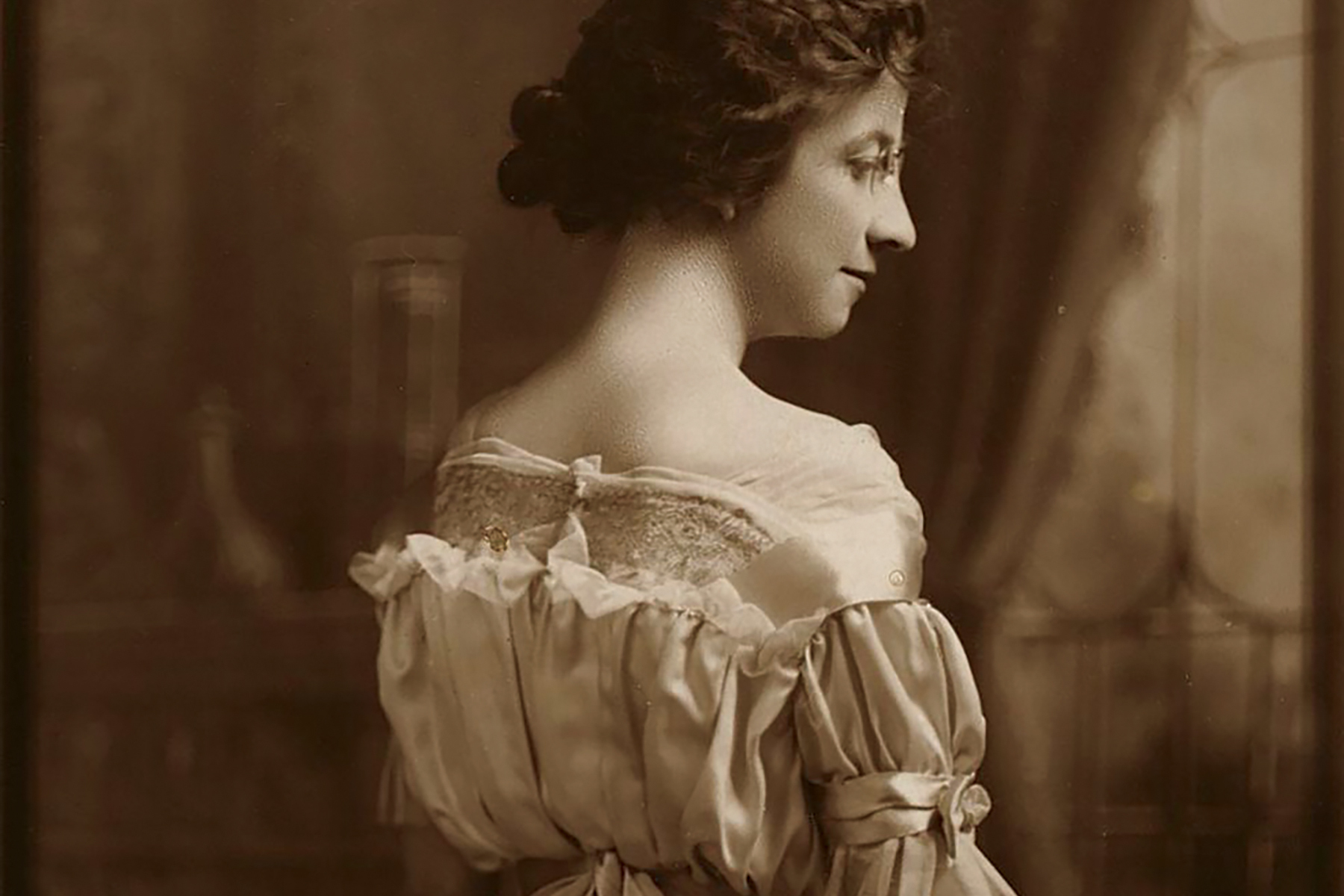Our Heritage
The Faces Of Wake Forest: Narratives Through Portraits

Portraits serve as a powerful means of self-expression, commemoration, and connection. When grouped together, portraits weave the narratives of individuals, families, and organizations to enhance our understanding of the history and legacy of Wake Forest.
The Portrait of Miss Ruby Reid tells the story of a female entrepreneur. The Reid family’s house, located downtown, served as the central location for Ruby’s entrepreneurial endeavors, including the first telephone company in Wake Forest, Home Telephone & Telegraph, and The Ruby Reid Agency, an insurance company. In her will, Ruby Reid designated funds for a local childcare center that served generations of Wake Forest children.
Portrait of Miss Ruby Reid is an early version of a glamour shot. Ruby’s pose captures her allure and intimacy as a 1920s female entrepreneur. Portrait artists sought to capture not just physical features but also the inner character and emotions of the subject to provide a comprehensive representation.
Hattie Reid, Ruby Reid’s mother was produced by Wooten-Moulton Studios, owned and operated by the pioneering photographer Bayard Morgan Wootten. Wootten began her career as a portrait artist and gained a reputation for the composition of her photographs. Interestingly, Wootten was probably America’s first female aerial photographer. Not all of the portraits produced by Wootten-Moulton Studios were created by Wootten herself. Her siblings helped operate her Chapel Hill and New Bern studios. However, it seems likely that Ruby, a businesswoman herself, and Hattie might have sought out Wootten for this project.
The motivations behind portrait-making can extend from capturing the love for a family member to preserving the subject’s identity and legacy for future generations. Ruby Reid may have commissioned this portrait of her mother, Hattie Reid, to demonstrate her love and admiration for her mother. Hattie Reid, Ruby Reid’s mother mimics James McNeill Whistler’s 1871 work Arrangement in Grey and Black No. 1, also known as Whistler’s Mother. After the portrait traveled to the Museum of Modern Art in 1932, many American portrait artists were inspired to imitate McNeill’s work.
While certain portrait artists aim to reveal the truth, others choose to narrate selective stories, reflecting only the image that the creators intended to put forward. In 1898, the trustees of Wake Forest College created a plan to place portraits of the “many famous sons of Wake Forest” in Wingate Memorial Hall to demonstrate the success of the school, its faculty, and its graduates.
Wake Forest College celebrated the financial and material sacrifices of Samuel and Sally Wait and William Worrell Vass through portraits. However, they left unmemorialized the sacrifices of the enslaved men and women of African descent who contributed to the school’s founding and development. When the school opened, enslaved people worked, cooked, washed, and performed other domestic and agricultural labor on campus. Two enslaved men lost their lives during the construction of the College Building in 1835. Their stories, however, are not captured in the portraiture commissioned by the College. Celebratory portraiture can fail to capture the complexities of an individual or an organization’s legacy.
From the Collections: Portraits includes portraits from the Wake Forest Historical Museum and the Wake Forest University Art Collections. This exhibit also includes contemporary works created by community members such as Nancy Jo Lee, Jane Steelman, Lemoi Desina, Tiffany Debman, and Amy Jorge. This exhibit examines how portraits convey identity, what portraits reveal about their creators and artists, and how the style of portraiture has changed over time. For more information on exhibit hours and events, check out wakeforestmuseum.org.
Carolyn Rice
Manager of operations and external relations of the Wake Forest Historical Museum and Wake Forest College Birthplace.

